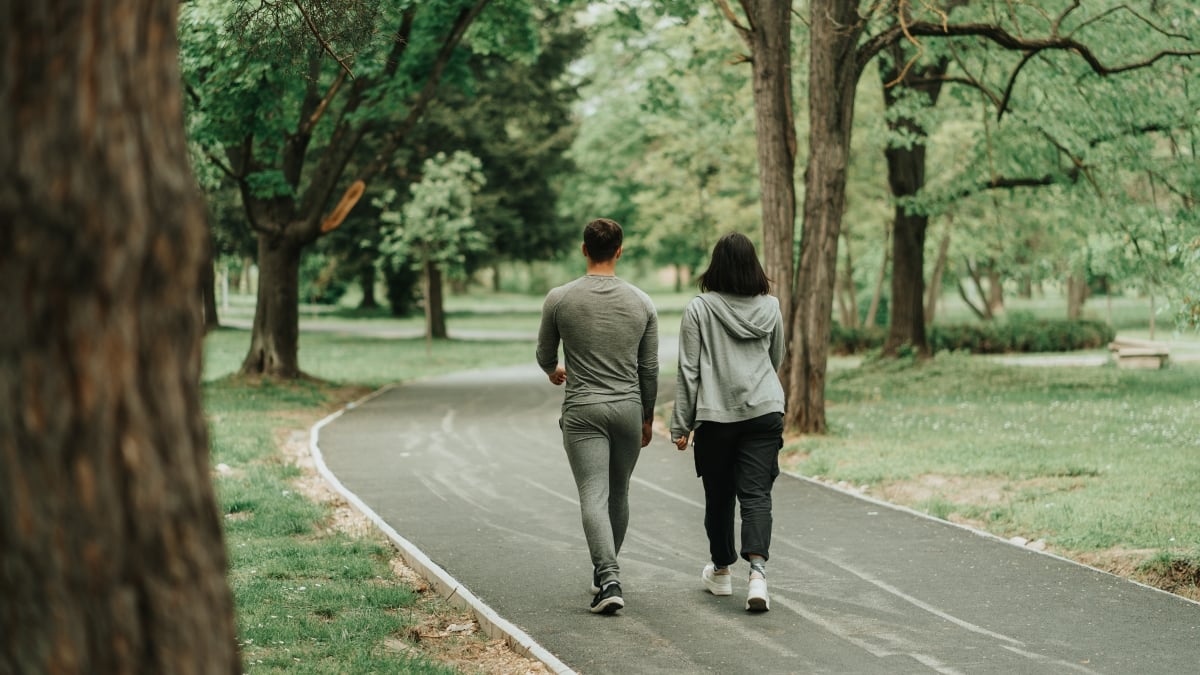
Walking is one of the more accessible forms of exercise. Not only can you do it without special equipment or memberships, you may even already get your steps in without formally considering it to be a workout. But how fast do you have to walk for it to “count” toward improving your health? New research may have an answer.
The meta-analysis, published this week in the British Journal of Sports Medicine, compared the risk of type 2 diabetes for people who walked at different speeds. (In many cases, people were asked to report how fast they walked; in others, they wore activity trackers like Fitbits or completed a timed walking test at a clinic visit.) Here’s how they categorized the various walking speeds:
-
Easy or casual walking: less than 2 miles per hour (30:00 per mile)
-
Average or normal walking: 2-3 miles per hour (20:00-30:00 per mile). This corresponds to the 3 mph that Google Maps uses to estimate travel time when they give you walking directions.
-
Fairly brisk walking: 3-4 miles per hour (15:00-20:00 per mile)
-
Brisk/striding walking: 4 miles per hour or faster (15:00 per mile)
Many people find that 4 miles per hour is about the fastest they can walk without breaking into a run. (This will, of course, depend on personal factors like how long your legs are.)
In this analysis, people who walked at an average or “fairly brisk” pace were less likely to develop type 2 diabetes later. (The average follow-up time period was eight years.) The faster people walked, the better, with brisk/striding walking being associated with a 39% lower risk of type 2 diabetes compared to easy or casual walking.
Based on these results, you’d want to walk faster than 2 miles per hour, if you can. (2.5 miles per hour is the speed that’s usually considered to count as “moderate” intensity exercise.) But the authors note that their results are of “low to moderate certainty, mainly from studies with a high risk of bias,” which means we might need to take them with a grain of salt.
Why does walking speed matter?
This isn’t the first study to compare walking speed to health outcomes. Previous studies have found that people who walk faster are less likely to have strokes, to die of cardiovascular disease, or to develop cognitive decline or dementia.
But does walking protect you, or is it just a sign that you’re already healthy? Possibly both.
A group of physical therapists wrote in a 2015 review that “Not only is [walking speed] indicative of an individual’s functional capacity and general health status, the measure has been shown to be predictive of a range of outcomes, including response to rehabilitation, functional dependence, frailty, mobility disability , cognitive decline, falls, institutionalization, hospitalization, cardiovascular-related events and mortality, as well as all-cause mortality.”
In other words, it’s possible that walking speed is just a stand-in for overall health. If you’re too sick to walk very fast, your health may already be declining. But we also know that exercising is good for your health, and that exercising tends to make you better at exercising.
Walking is cardio, after all, if you walk at an appropriate speed. If you don’t get much exercise, a normal walking speed of 2.5 miles per hour is enough to count as “moderate” exercise (the kind we should all do for at least 150 minutes a week, or about 20-30 minutes per day). Jogging or fast walking can count for some of your “vigorous” exercise minutes, which count double.
Ultimately, we don’t have a perfect way to measure the amount of exercise necessary for health. Step counting has been a favorite because it’s easy to measure with a pedometer, a smartwatch, or even by keeping your phone in your pocket. Walking speed helps here, too: the faster you walk, the more steps you’ll get in.
But still: we already know that 10,000 steps is a bullshit goal; the number of steps you need to improve your health ranges from 2,800 to 9.800, depending on which study you’re reading and how they defined their health-related outcomes. Most medical and fitness professionals will tell you that the more you can walk, the better—and that if you currently walk slowly, you’ll likely be able to walk faster as you become fitter.

Comentarios recientes